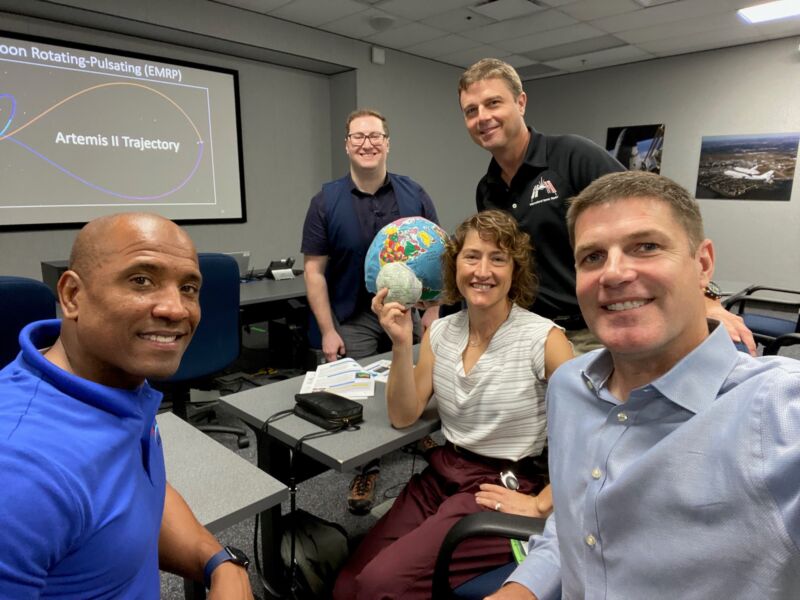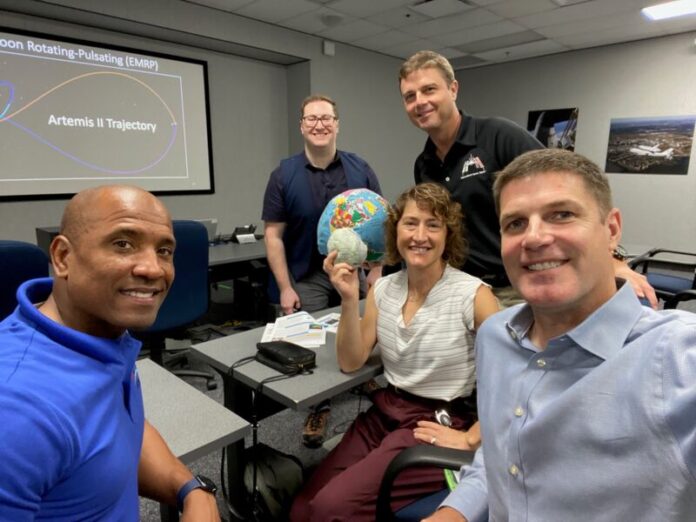
Enlarge / Astronauts Victor Glover, Christina Koch, Reid Wiseman, and Jeremy Hansen are joined by an instructor (background) on the first day of Artemis II crew training. (credit: NASA)
The four astronauts assigned to soar beyond the far side of the Moon on NASA’s Artemis II mission settled into their seats inside a drab classroom last month at the Johnson Space Center in Houston. It was one in a series of noteworthy moments for the four-person crew since NASA revealed the names of the astronauts who will be the first people to fly around the Moon since 1972.
There was the fanfare of the crew’s unveiling to the public in April and an appearance on The Late Show with Stephen Colbert. There will, of course, be great anticipation as the astronauts close in on their launch date, currently projected for late 2024 or 2025.
But many of the crew’s days over the next 18 months will be spent in classrooms, on airplanes, or in simulators, with instructors dispensing knowledge they deem crucial for the success of the Artemis II mission. In the simulator, the training team will throw malfunctions and anomalies at the astronauts to test their ability to resolve a failure that—if it happened in space—could cut the mission short or, in a worst-case scenario, kill them.
Read 29 remaining paragraphs | Comments
Ars Technica - All contentContinue reading/original-link]




